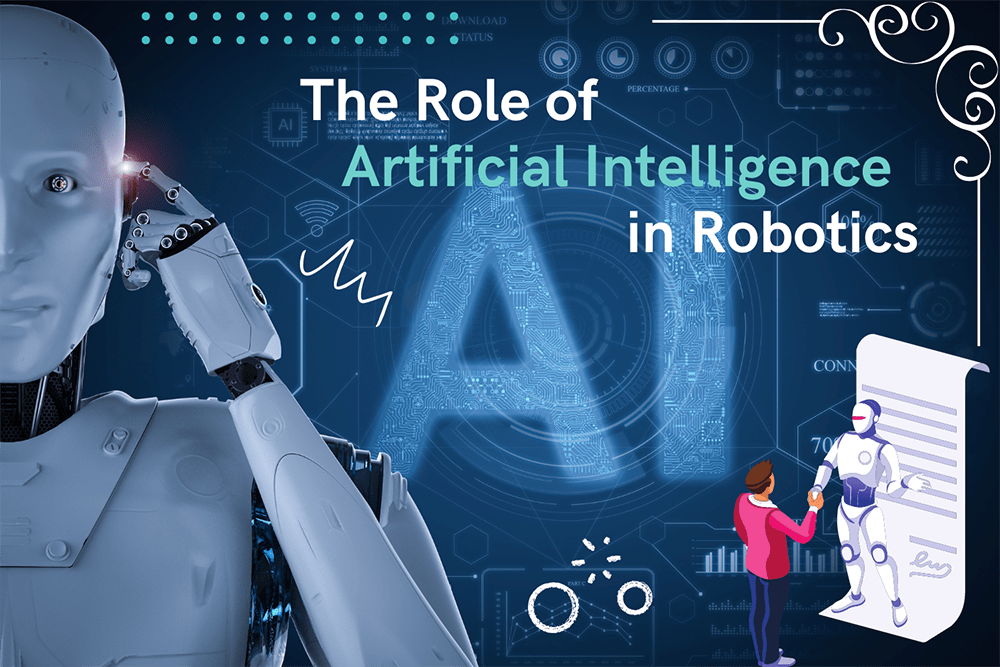Artificial Intelligence (AI) and robotics are two of the most transformative technologies of the 21st century. When combined, they form a powerful partnership that is redefining industries, economies, and the way humans interact with machines. This synergy is the driving force behind what experts call the Fourth Industrial Revolution or Industry 4.0.
As businesses and governments worldwide invest in automation and smart systems, the integration of AI and robotics is leading to smarter factories, safer workplaces, and faster innovation. Let’s explore how this partnership is shaping the future of industry and everyday life.
Table of Contents
The Evolution of Robotics and AI
Traditional robots were programmed to perform repetitive tasks in controlled environments such as assembly lines. These early machines lacked flexibility and couldn’t adapt to change. With the advent of AI, robots have gained the ability to perceive, learn, and make decisions.
Through machine learning and computer vision, robots can now identify objects, navigate complex environments, and even understand human gestures. For example, Boston Dynamics has developed robots like Atlas and Spot that use AI to balance, walk, and respond to their surroundings in real time.
Similarly, AI-driven robotic arms in manufacturing are using predictive algorithms to detect faults before they occur, improving efficiency and reducing downtime. According to PwC, integrating AI and robotics could boost global GDP by more than 14% by 2030.
Smart Factories and the Rise of Industry 4.0
The concept of Industry 4.0 revolves around connecting intelligent machines through the Internet of Things (IoT) and enabling them to operate autonomously with minimal human intervention. AI and robotics together play a central role in this transformation.
Smart factories use sensors, data analytics, and AI algorithms to manage production lines efficiently. Systems like Siemens MindSphere and ABB Ability collect and analyze data from robotic systems to predict maintenance needs and optimize performance.
These smart systems not only improve productivity but also enhance safety by allowing robots to handle hazardous tasks that once endangered human workers.
AI and Robotics in Healthcare
The healthcare industry is witnessing a revolution driven by robotic surgery, automated diagnostics, and patient care robots. Surgical robots, such as Da Vinci Surgical System, use AI to enhance precision and minimize human error during complex operations.
AI algorithms help these robots interpret medical images, identify tissues, and plan surgical movements with remarkable accuracy. Meanwhile, service robots in hospitals assist in medication delivery, sterilization, and even patient companionship.
A study by Statista estimates that the global healthcare robotics market will reach nearly $18 billion by 2030, largely due to AI integration.
Autonomous Robotics in Logistics and Transportation
AI-powered robots are transforming logistics, warehousing, and transportation. Companies like Amazon Robotics and Ocado use intelligent robots to manage inventory and optimize order fulfillment.
Autonomous mobile robots (AMRs) navigate warehouses independently, using sensors and AI to avoid obstacles and select efficient routes. In transportation, self-driving vehicles and delivery drones represent the next phase of automation, powered by AI decision systems.
According to McKinsey & Company, autonomous trucking could reduce logistics costs by up to 45% while improving safety and delivery times.
Collaborative Robots and Human-Robot Interaction
A major advancement in robotics is the rise of collaborative robots (cobots) — machines designed to work safely alongside humans. Cobots equipped with AI can understand human gestures, adjust their strength, and learn from human actions.
In industries such as automotive manufacturing, companies like Universal Robots and KUKA are deploying cobots that assist human workers in lifting, assembling, or welding components.
These systems represent a shift from automation that replaces humans to automation that empowers them. A World Economic Forum report predicts that while AI and robotics may displace some manual jobs, they will create new roles requiring creativity, problem-solving, and technical expertise.
Ethical and Economic Implications
As AI and robotics continue to advance, ethical questions arise around employment, data privacy, and autonomy. Governments and organizations are working to develop frameworks for responsible AI use, ensuring transparency and fairness.
The European Commission’s AI Act and global initiatives by the OECD AI Observatory emphasize safety, accountability, and the ethical use of intelligent machines. Balancing innovation with regulation will be key to ensuring that automation benefits society as a whole.
The Road Ahead
The partnership between AI and robotics represents a pivotal moment in human progress. From smart factories to self-learning healthcare robots, this alliance is not just enhancing productivity but redefining the meaning of work and innovation.
In the coming decade, we can expect robots to evolve from mere tools to intelligent collaborators that amplify human potential. The fusion of AI and robotics is not about replacing humans but about creating a future where machines and people grow smarter together.
Also Check AI and Cybersecurity – Powerful Digital Defense – 2025




1 thought on “AI and Robotics – Powerful Partnership of Era – 2025”